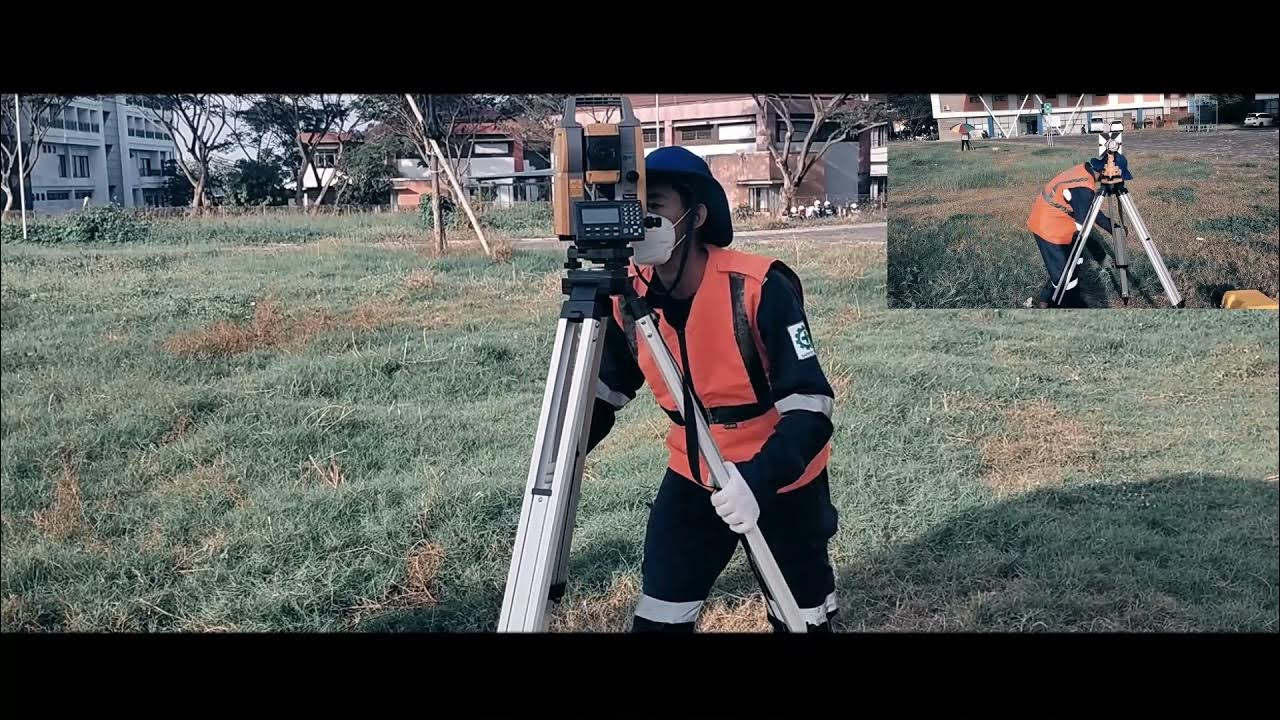Deflection Angle Method/Rankine's Method of Setting out of Simple Circular Highway Curve
Summary
TLDRThis educational video introduces the deflection angle method for setting out a simple circular curve in surveying. It explains the basic data required, including the deflection angle and radius of the curve, and demonstrates how to calculate the deflection angle using the formula 90L/πR. The method involves marking points on the curve using a theodolite and a peg interval, which can be adjusted for accuracy. The video also highlights a crucial check to ensure the calculations are correct by comparing the total deflection angle with half of it. The presenter promises further examples and methods in upcoming videos.
Takeaways
- 📚 The video introduces a method for setting out a simple circular curve using the deflection angle method.
- 📐 Basic data for a simple circular curve, such as the deflection angle and radius, are always known and used in this method.
- 🔍 The point of intersection where the back tangent and forward tangent cross is crucial for setting out the curve.
- 📍 The deflection angle is measured using a theodolite to establish the forward tangent.
- 📈 The formula for the deflection angle is given as 90 * L / (π * R), where L is the chain interval and R is the radius of the curve.
- ⛓ The length of the curve is calculated using the formula π * R^2 / 180, which helps in determining the chain interval.
- 🔑 The chain interval (L1) is chosen to maximize the number of points on the curve for better accuracy.
- 📏 The theodolite is used to set the deflection angle by tilting the telescope and marking points on the curve at the specified distance (L1).
- 🔄 The process of marking points on the curve involves adding multiples of the deflection angle to maintain the station point without moving the theodolite.
- 📊 The final point on the curve may not be exactly at L1 due to the decimal values obtained from the curve length calculation.
- 🔍 A check for the accuracy of the calculations is provided by comparing the total deflection angle from PC to PT to half of the calculated deflection angle.
- 👨🏫 The video concludes with a promise to teach how to solve an example of setting out a simple circular curve in future videos.
Q & A
What is the main topic of the video?
-The video is about learning the deflection angle method for setting out a simple circular curve in surveying.
What are the basic data required for the deflection angle method?
-The basic data required are the deflection angle and the radius of the curve, which are typically known beforehand.
What is the point of intersection in the context of the video?
-The point of intersection is where the back tangent and forward tangent are expected to cross each other.
How is the forward tangent determined in the deflection angle method?
-The forward tangent is determined using a theodolite or any instrument capable of measuring horizontal angles once the basic data is known.
What is the significance of the tangent length in the deflection angle method?
-The tangent length is crucial as it helps in determining the point of tangency and ultimately in drawing the center of the curve, given the known radius.
What is the formula for calculating the deflection angle?
-The formula for the deflection angle is 90 * (L1/R), where L1 is the chain interval and R is the radius of the curve.
How is the length of the curve calculated?
-The length of the curve is calculated using the formula πR^5/180, which involves the radius of the curve and the deflection angle.
What is a peg interval and how is it determined?
-A peg interval is the distance between two consecutive points on the curve. It is determined based on the desired number of points on the curve and the length of the curve.
Why is it beneficial to multiply the deflection angle by 2 when marking points on the curve?
-Multiplying the deflection angle by 2 is beneficial because it eliminates the need to change the station point, keeping the process consistent and time-efficient.
How can the accuracy of the curve setting be checked?
-The accuracy can be checked by ensuring that the total deflection angle from the PC to the PT line is equal to half of the calculated deflection angle.
What is the purpose of the check mentioned in the video?
-The check serves as a validation to confirm that the calculations for the curve setting are correct, ensuring the curve is accurately set out.
Why might the last point on the curve not be equal to the peg interval?
-The last point might not equal the peg interval because the length of the curve is often a decimal value when calculated, making it difficult to maintain the exact peg interval on the field.
What is the final step in setting out the curve using the deflection angle method?
-The final step is to calculate the last deflection angle using the formula with L2, which is the angle between the last two points on the curve, ensuring the curve is correctly set out.
Outlines

此内容仅限付费用户访问。 请升级后访问。
立即升级Mindmap

此内容仅限付费用户访问。 请升级后访问。
立即升级Keywords

此内容仅限付费用户访问。 请升级后访问。
立即升级Highlights

此内容仅限付费用户访问。 请升级后访问。
立即升级Transcripts

此内容仅限付费用户访问。 请升级后访问。
立即升级浏览更多相关视频

Pengukuran Poligon Tertutup dan Detail pada Theodolite

How to Never Forget What You Study With These PROVEN TECHNIQUES

SA22: Virtual Work Method (Beams)

04 MENGIKAT KE MUKA

[TUTORIAL 1] DASAR MENGGUNAKAN TOTAL STATION TOPCON GM-101 SERIES | ANAK TEKNIK

Cara Pematokan (Stake Out) dengan Alat Total Station Topcon GM-55
5.0 / 5 (0 votes)
